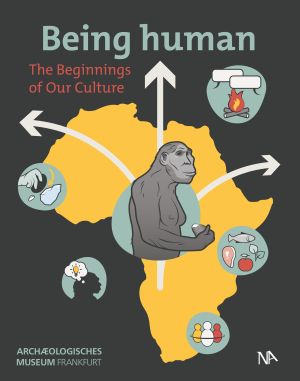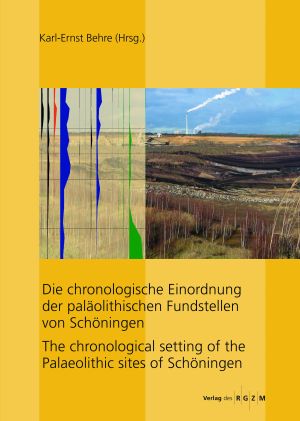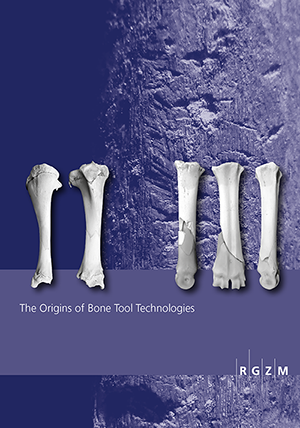Conard, Nicholas J.
The Homotherium Finds from Schöningen 13II-4: Man and Big Cats of the Ice Age. Contributions of the scientific workshop at the paläon (Schöningen) from 05.06 to 07.06.2015
Big cats, including sabre-toothed cats, are for many people the symbol of a dangerous predator. In 2012, the first remains of the European sabre-toothed cats were discovered at the approximately 300,000 year old site of Schöningen, famous for mankind’s oldest wooden weapons. As a result of this discovery, a two-day scientific workshop was held in Schöningen in 2015 titled »The Homotherium finds from Schöningen 13II-4 and big cats of the Ice Age«. This volume is based on the lectures of this workshop and presents an overview of a topic that is crucial for human development, our coexistence with big cats. The aim of this volume is to address the various topics surrounding the European sabre-toothed cat. This includes the circumstances of their extinction, comparisons to extant big cats and their relationship to past humans.
Die Pflanzen von Schöningen
Die Speere von Schöningen belegen als die ältesten Jagdwaffen der Menschheit die Nutzung der Ressource Holz durch die Menschen vor etwa 300 000 Jahren. Es besteht eine hohe Wahrscheinlichkeit, dass eine breite Artenvielfalt von Pflanzen für die Schöninger Jäger großes Nutzungspotential hatte von der Nutzung kohlenhydratreicher Wurzeln im Winter bis zur Medizinalpflanze. Gerlinde Bigga hat in ihrer hier vorgelegten Dissertation die Pflanzenfunde der Ausgrabungen von Schöningen auf ihr Nutzungspotential für den Menschen hin untersucht und zeigt die vielfältigen Ressourcen auf, die den Urmenschen zur Verfügung standen. Auch wenn für diese Forschungen archäologische Nachweise schwer zu erbringen sind, kann sie mit dem Rückgriff auf ethnologische Untersuchungen und Berechnung des Energieverbrauchs die Nutzung von Pflanzenressourcen aufzeigen. Ihre Arbeit ist ein wichtiger Baustein, um das komplexe Verhältnis zwischen Mensch und Natur zur Zeit der Schöninger Speere besser zu verstehen und die damaligen Menschen nicht nur als Jäger kennenzulernen.
Being Human: The Beginnings of Our Culture. Accompanying volume to the special exhibition 5 May 2021 – 27 March 2022, Archäologisches Museum Frankfurt
Is it possible to define what it means to be human based on biological, social, ecological, or cultural factors? Is it something physical, something in the way we think, or in the way we behave? When we look at the long history of humankind, it becomes clear that we had to experience many different developmental stages throughout the millions of years of developmental history to become the multifaceted species that populates this Earth today.English Edition of: "Menschsein. Die Anfänge unserer Kultur"
Human behavioural adaptations to interglacial lakeshore environments
During the course of human evolution, we have successfully adapted to various climates and habitats. Interglacial environments, in particular, offer an excellent opportunity to study these adaptations. On the north European plain, interglacials often correlate with the flooding of basins, resulting in the appearance of lacustrine landscapes. These environments exhibit remarkable ecological diversity with highly concentrated and predictable resources. Numerous archaeological sites from the Palaeolithic to the Mesolithic are preserved in these lacustrine landscapes, providing rich sources of potential data. Many of these archaeological sites are well-known as locations for the procurement and butchering of animals, lithic provisioning, gathering vegetal and collecting aquatic resources by humans. These sites are embedded in wetland deposits with favourable conditions for the preservation of organic and botanical remains and are thus exceptional archives for detailed analyses of human adaptations to changing, dynamic environments. In a diachronous perspective from the Middle Pleistocene to the Holocene, the current anthology collates studies on differing aspects of interglacial archaeological lakeland sites, illustrating human survival strategies under similar environmental conditions through the ages. This volume contributes to a core research theme “Human behavioural strategies in interglacial environments” of the MONREPOS Archaeological Research Centre and Museum for Human Behavioural Evolution (RGZM) (Neuwied, Germany). The aim of the research is to undertake a holistic and diachronic analysis of survival strategies under similar environmental parameters, in order to document the evolution of hominin subsistence behaviour and to gauge whether certain subsistence adaptations arose in direct response to distinct environmental conditions.
The origins of bone tool technologies: "Retouching the Palaeolithic: Becoming Human and the Origins of Bone Tool Technology" Conference at Schloss Herrenhausen in Hannover, Germany, 21.- 23. October 2015
This volume is a collection of papers from the conference titled “Retouching the Palaeolithic: Becoming Human and the Origins of Bone Tool Technology” held in October 2015 at Schloss Herrenhausen in Hannover, Germany. With major funding from the Volkswagen Foundation’s Symposia and Summer School initiative, the conference brought together an international group of scientists from an array of research backgrounds to explore the origins and development of bone tool technologies in prehistory, specifically retouchers, compressors and percussors used in various lithic knapping activities. The diverse conference attendance generated an assortment of perspectives on bone tool use covering western Europe to the Levant, from the Lower Palaeolithic to Neolithic times. Collectively, these papers provide an overview on how the integration of bone tools with other Palaeolithic technologies influenced human subsistence and other socio-economic behaviours over time and space. In the end, this volume is not just about bone tools. Rather, this compilation is intended to stimulate broader ideas on technology and innovation, for the ability and desire to create new tools truly lies at the core of what makes us human.












